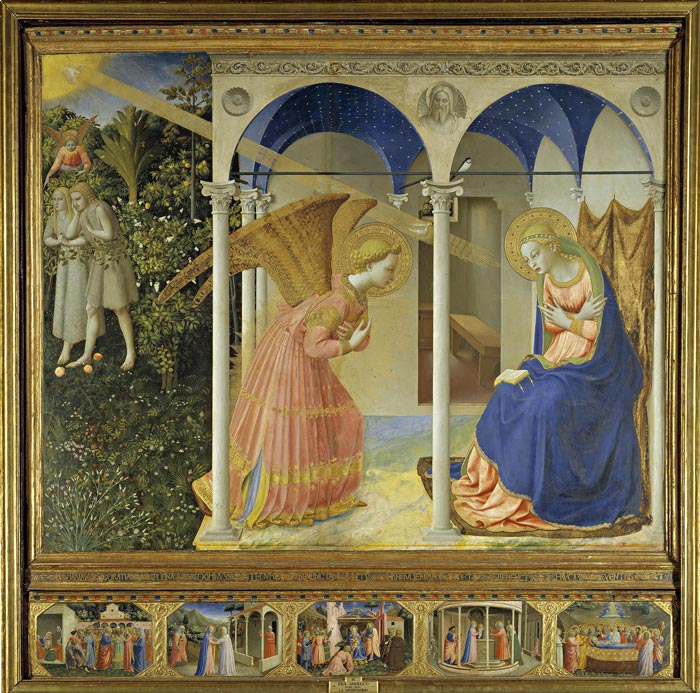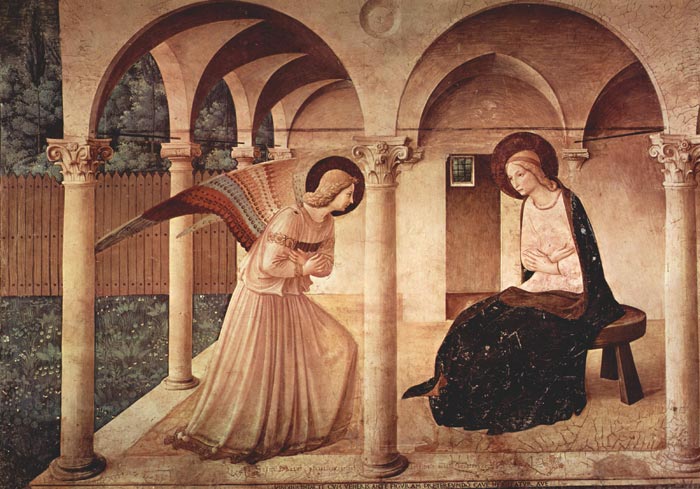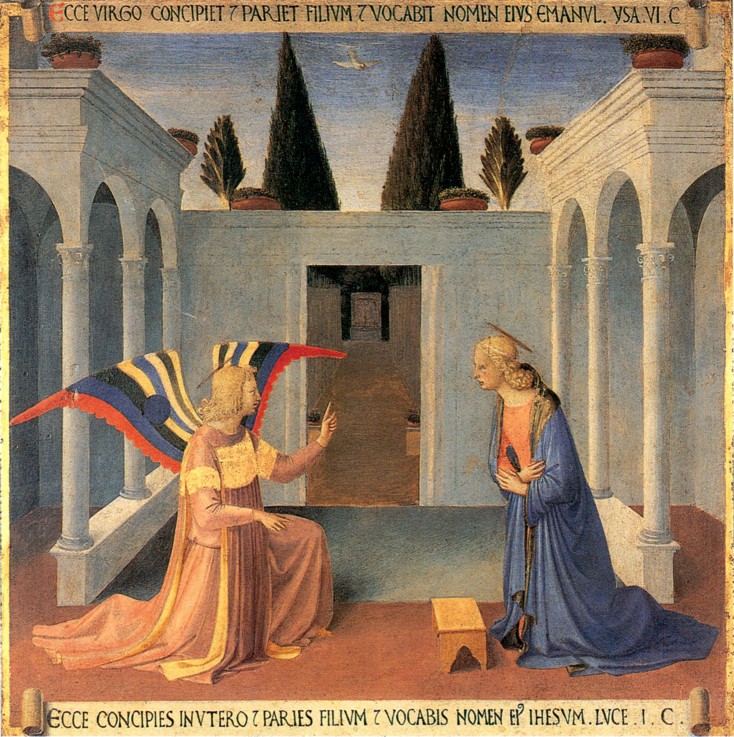The theme is a commonplace: a virgin receives the visit of an angel who tells her she will bear a divine child. The narrative entirely conventional: the angel visits her in her room, outside of which a more-or-less Edenic garden is also offered to our view, eventually with Adam and Eve being expelled from it in retroactive logic.
Throughout his lifetime, Fra Angelico produced five paintings (including three frescos) on this very motif: the Annunciation of Christ. (They are reproduced below in chronological order.)
1

2

3

4

5

There are slight differences from one painting to another: Mary’s room differs here and there, the columns and the ceiling vary, in the first three paintings a contiguous room is suggested, in the fourth painting there is no outside to it, and in the fifth one the room turns into a patio; while Mary’s hands remain identical in all the paintings, the angel’s hands adopt, in contrast, different positions; Adam, Eve, and the angel that expels them from paradise appear in only two of the paintings; and, more importantly perhaps, in the last one Far Angelico shifts the perspective completely, placing the scene at the centre rather than on the right side, with a corridor, moreover, making the perspective itself infinite.
But there is something else, something truly extraordinary – Fra Angelico’s great moment of freedom, Fra Angelico’s dream…
Look at angel’s wings. They transform gradually, enriching their chromaticismn (compare paintings nos. 1, 2, 3) and then imaginatively increasing their form (painting no. 4) until they explode in colour (in painting no. 5) to become the wings of a butterfly – a pop, Warholian-like butterfly!
In fact the painting is all there, in the butterfly’s wings. And one actually wonders if Fra Angelico ever aimed at painting anything else – like Cézanne, who, as Deleuze reminds us, only aimed at painting an apple…
But why butterfly wings, anyway?
The angel’s wings convey an opening, in the sense that they put into communication two worlds: what Fra Angelico understands to be a heavenly world and what he takes to be a merely human world. Thereby they express what cannot be represented or narrated, since this would amount to translate it into the parameters of one world (ours), thus betraying it. They express what can only be pointed to as an event: the unexpected irruption of one world in a different world. In other words, their colourful excess (compare their salient chromaticism to the mild chromaticism prevalent in the rest of the painting) is the sign of the overflowing of one world into and beyond the limits of the other one – total iridescence!
The shape of the wings can hardly contain the event. In this way Fra Angelico, rather than telling us a story, which he also does, makes us witness something: something that occurs, something that is not exactly there.
